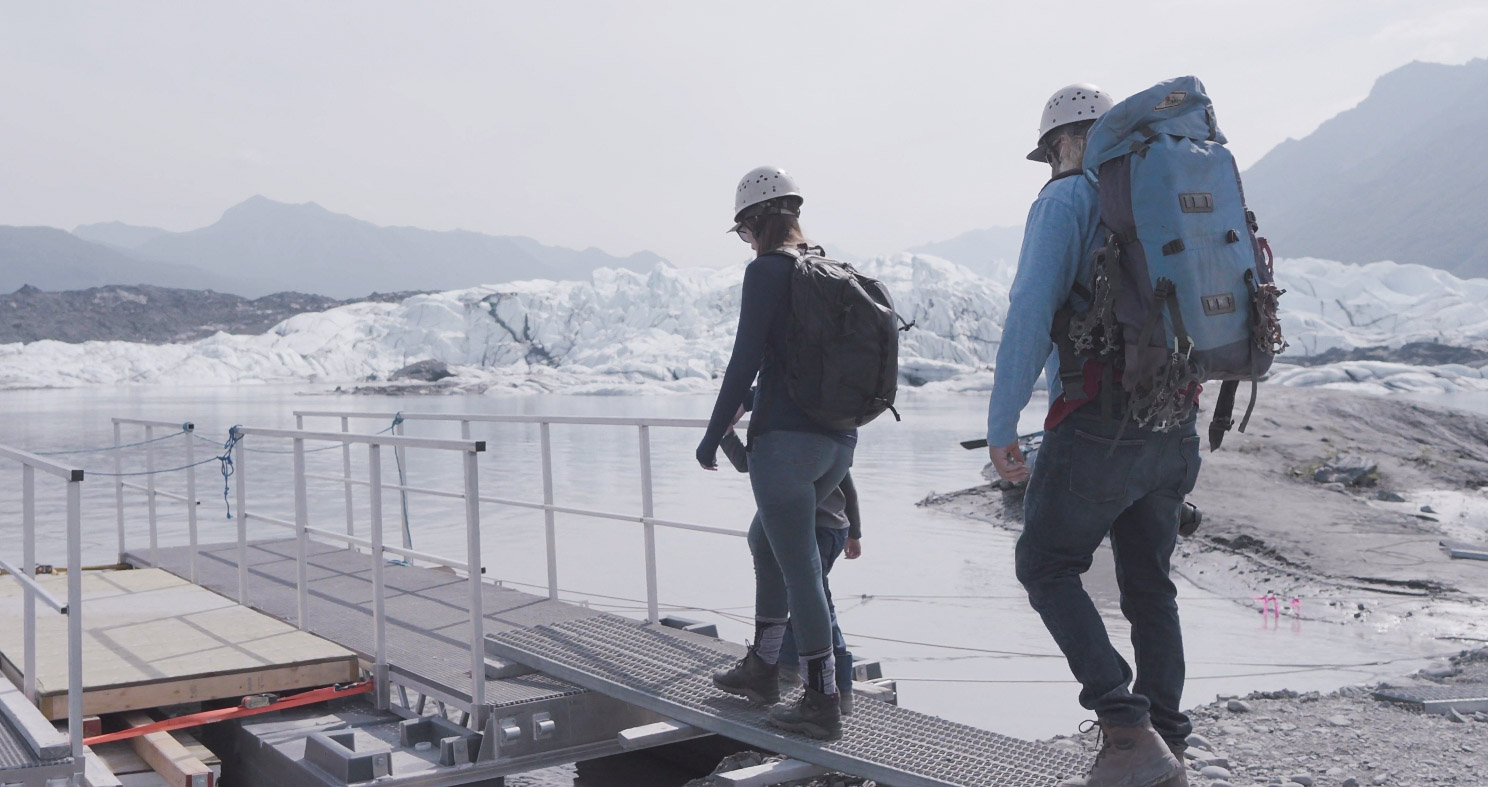Glacial Dams

Glacial Ice Dams
Glaciers move consistently. The rate and manner in which they change depend on the elements and surrounding environment. In the warmer summer months, glaciers melt more quickly and have a shorter time period for reforming. Many of the features we observe in the summer are effects of gravity, force, and elemental shifts.
During the winter, glaciers move much slower and have more time to accumulate than melt. As we observe the melting and forming stages of glacier ice, we can simultaneously explore some of the unique features created during these transition periods.
What are Glacial Dams?
In simplicity, glacial dams can be characterized as ice blockages in meltwater. These floating ice formations flow along with the meltwater and gravity until reaching land features that cannot be easily moved through or around. This is where we see glacial dams start to have more nuanced features that accumulate into something much bigger.
Features of a Glacial Dam
Dams formed by moraine (rock deposits carried by glacier ice) can be dense and stable, and hold meltwater lakes for years. (NSIDC) Factors contributing to this stability are the density and bonding of ice formations, the turbidity of water, and gravity. Other glacial dams can be categorized as unstable, or leaking glacial dams. Leaky ice formations allow meltwater to slowly drain into nearby rivers while reserving some of the cleanest water available.

Changes in Ice Formations
Glacial dams, a natural levee, change state at different relativity rates to the surrounding area. As our environments change across the globe we collectively become more observant of the attributes of these ice formations. And the dynamics between land features that influence their flux state.
Glacial dams influenced by moraine walls have a more porous sedimentary composition. Scientists keep a keen eye on these. Once too much force presses on the rocky material, those porous sheets can burst quickly and without much warning.
Leaky glaciers can also lose their integrity with the increase and force of meltwater. Ice dams with gentle cascades of meltwater can burst these natural barriers and overflow lakes. So, these dams act as both a holding and release system.
Ice dams hold in pristine, fresh drinking water, and create water reserves. They can also have an outburst flood, which has a significant impact on surrounding areas and have little to no warning time. Despite environmental changes, having a safe drainage system for these is quite essential.
Effects and Acknowledgments
As scientists observe the changes in the relation to the stability of ice and the increase in meltwater, people adapt to assess these risks. Some experts have tried to reinforce moraine walls as they gauge its strength. Others have even added drainage to leaky ice dams if a flood is possible. This allows natural formations to continue to preserve this fresh water while still draining into rivers.
While glaciers are beautiful and enthralling, please leave any of this risk mitigation to the experts. While glaciers are inherently dangerous, there is still much to be explore and learn from these ice giants. You will witness the beauty of the natural world on a larger scale, while hopefully learning more about our own worlds and how we can interact with abrupt changes.
